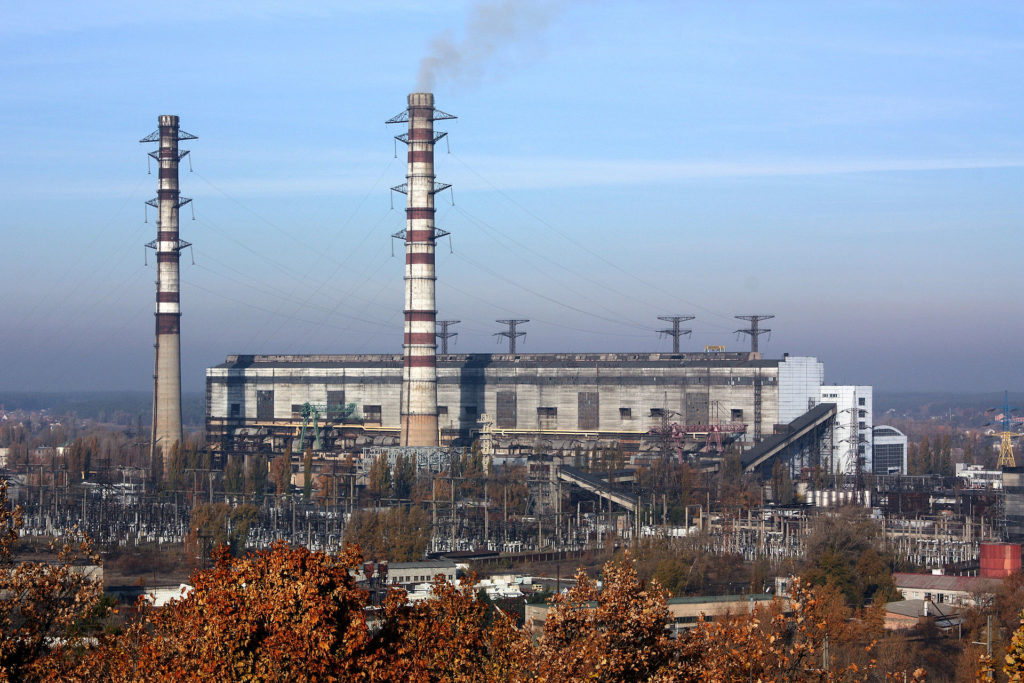Russians hit Trypilska power station with five Kh-69 missiles on 11 April
Law enforcement sources say Russia used five Kh-69 missiles to hit the Trypilska power plant on 11 April; an energy company suggests potential EU-supported rebuilding, but ongoing Russian threats render reconstruction without air defenses "futile."


Law enforcement sources told Suspilne that the Russians targeted the Trypilska thermoelectric power plant on 11 April with five Kh-69 missiles. An energy company says the plant may be rebuilt with equipment offers from EU countries, though ongoing Russian threats render reconstruction without air defenses futile.
On the morning of April 11, Russia launched an air attack on Kyiv Oblast, damaging a critical infrastructure facility without causing any injuries, as reported by the Kyiv Regional Military Administration. The DTEK energy company later reported serious damage to equipment at two thermal power plants due to the Russian strike, with power engineers actively repairing and restoring the equipment. Centernergo, a major electric and thermal energy-producing company in central Ukraine and eastern Ukraine, later clarified that the Russian attack had completely destroyed the Trypilska TPP, leading to a large-scale fire and the total loss of power generation.
Russian massive missile attack wipes out Ukrainian capital Kyiv’s main power plant
The fully destroyed Trypilska TPP, following a Russian attack, is subject to reconstruction proposals with equipment offers from European countries, as Andriy Hota, head of the supervisory board at Centernergo, stated on Voice of America’s “Briefing” program, according to Suspilne. However, Hota noted that reconstructing the TPP without providing Ukraine with air defense systems would be futile due to the continuous threat of Russian attacks.
According to Defense Express, Russia’s new Kh-69 cruise missiles, used in the strike on Trypilska thermal power plant, pose a significant threat due to their advanced stealth capabilities, ability to be launched from tactical aircraft like the Su-34 and Su-35, and their effectiveness at evading Ukraine’s air defenses. Despite being subsonic and having a smaller warhead than the hypersonic Kinzhal, the Kh-69’s ability to fly at ultra-low altitudes and launch without the usual signs of large-scale attacks involving strategic bombers allows it to strike with little warning, complicating defense efforts significantly.
Russian air attacks
While Russia bombed Ukraine’s power grid extensively in the winter of 2022-2023, causing widespread distress amid the cold, it conducted relatively fewer attacks during this year’s winter season.
Russia’s Shahed explosive drone attacks became daily last summer. Missile attacks were never massive in scale until the New Year, when they escalated to weekly occurrences. In March, Russia further increased massive missile assaults to every few days to a week, primarily targeting Ukraine’s energy infrastructure, including power substations and power-generating facilities.
Read also:
- Defense Express: Russia’s new Kh-69 cruise missiles, “worse than Kinzhal,” used in Trypilska power plant strike
- Russian massive missile attack wipes out Ukrainian capital Kyiv’s main power plant
- Russia attacks Ukraine with 82 air targets, hitting energy infrastructure in Lviv, Kyiv, Kharkiv, Zaporizhzhia oblasts



